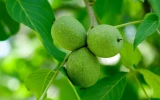When Do Walnut Trees Produce Nuts? (What Time of Year)
Nut production of walnut trees begins 3–5 years after being planted, but peak production only starts when they are about 30 years old. But exactly at what time of the year do they produce nuts? Let's find out in this article.
Walnut trees typically produce nuts in the fall, usually between September and November. The exact timing can vary depending on the climate in your region, but one way to tell if the nuts are ready for harvest is to check if the outer husk has split open and turned brown.
Walnut trees are highly dependent on the environment to bear fruit, especially with climate and soil conditions. To know how these factors affect the timing of nut production, let's dig deeper into this article.
It's important to know when walnut trees typically produce nuts during the year, as this timing will critically influence your farming schedule and harvest planning in the process of starting your walnut farm from scratch.
Summary
- Walnut trees require a minimum of 700 to 800 hours of chilling temperatures during the winter months to produce nuts in the fall.
- You may need to harvest the nuts as soon as possible after they fall to the ground, as they can quickly become contaminated by pests or mold if left on the ground for too long.
- To ensure continuity of nut production, growers need to make sure that there are enough male trees in the orchard to provide adequate pollen for the female trees (1 male:10 female trees).
- Growers can manage the alternate bearing habits of walnut trees by practicing thinning the crop, using cultural practices such as pruning and fertilization, and using grafting techniques to create trees that produce a more consistent crop.
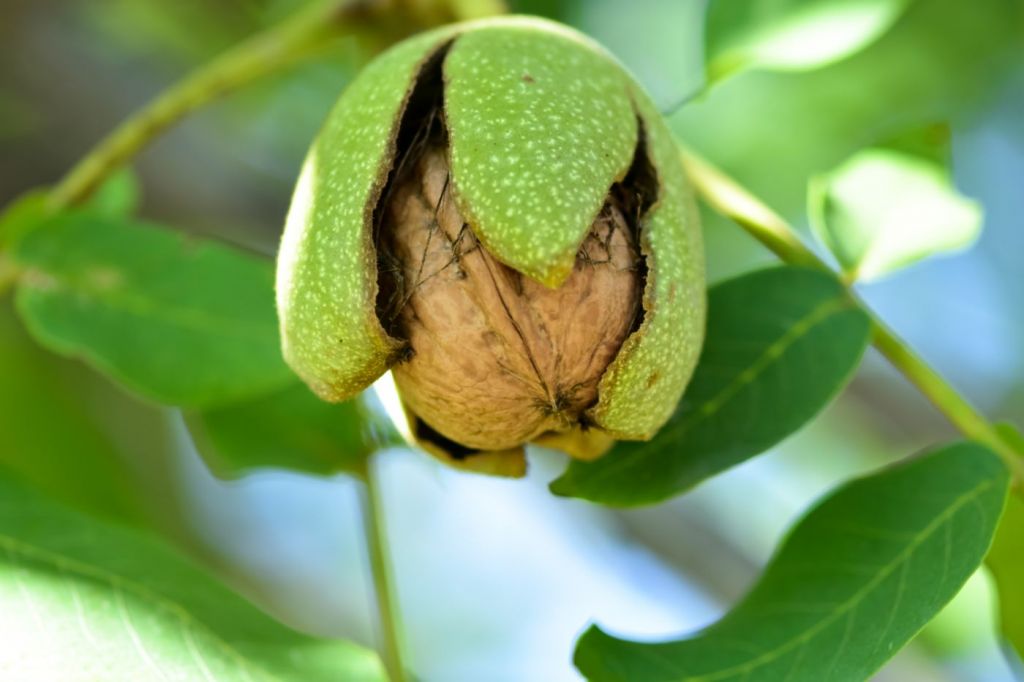
On this page:
Walnut Trees Produce Nuts in the Fall
Walnut trees typically produce nuts in the fall, usually between September and November. The exact timing of nut production can vary depending on the climate in your region, but you can usually expect to harvest your nuts in the late fall.
The table below shows the projection of when you can expect your walnut trees to bear nuts, depending on your location:
| Region | Time of Year for Nut Production |
|---|---|
| Pacific Northwest (USA) | September - October |
| California (USA) | September - November |
| Northeastern USA | October - November |
| Midwest USA | September - October |
| Southern USA | October - November |
| Europe | September - October |
| Asia | September - November |
The timing of nut production in walnut trees is also influenced by several factors, including the tree's age, genetics, and environmental conditions. Young trees may take several years to start producing nuts, while mature trees can produce hundreds of pounds of nuts each year.
It can also be affected by the weather conditions during the growing season, such as temperature, rainfall, and humidity levels.
In general, walnut trees require a certain amount of chilling hours during the winter months to produce nuts in the fall. Chilling hours refer to the number of hours that the temperature is between 32 and 45 degrees Fahrenheit during the dormant period.

If the tree does not receive enough chilling hours, it may not produce nuts at all or may produce fewer nuts than usual.
Once the nuts have matured on the tree, they will begin to fall to the ground. You may need to harvest the nuts as soon as possible after they fall, as they can quickly become contaminated by pests or mold if left on the ground for too long.
You can tell when the nuts are ready to be harvested by looking for signs such as the outer shell beginning to split open or the nutmeat starting to harden.
Generally, walnut trees will start producing nuts within 3 to 5 years of being planted, depending on the variety. However, it can take up to 7 years for some trees to produce nuts.
Once your tree starts producing nuts, you can expect it to continue to do so for many years to come. Some walnut trees can live for over 100 years and produce nuts for most of their lifespan.
Factors That Affect Nut Production in Walnut Trees
Walnut trees are a valuable crop for their nutritious and delicious nuts. However, several factors can affect nut production in walnut trees, and here's how you can counteract each one:
| Factors That Affect Nut Production in Walnut Trees | Counteracting Strategies |
|---|---|
| Climate and soil conditions | - Ensure that the trees receive a minimum of 700 to 800 hours of chilling temperatures below 45°F - Plant the trees in well-drained soils with a pH range of 6.0 to 7.5. - Provide regular watering during the growing season |
| Pollination | - Ensure that there are enough male trees in the orchard to provide adequate pollen for the female trees. - The recommended ratio of male to female trees is 1:10. |
| Alternate bearing | - Practice thinning the crop to reduce the tree's overall crop load - Use cultural practices, such as pruning and fertilization - Use grafting techniques |
Climate and soil conditions affect nut production
Walnut trees grow best in areas with a mild Mediterranean climate with cool winters and warm summers. The trees require a minimum of 700 to 800 hours of chilling temperatures below 45°F to break dormancy and initiate bud growth.
If the trees do not receive enough chilling hours, they may produce fewer nuts or have delayed bud break. Walnut trees also require well-drained soils with good water-holding capacity.
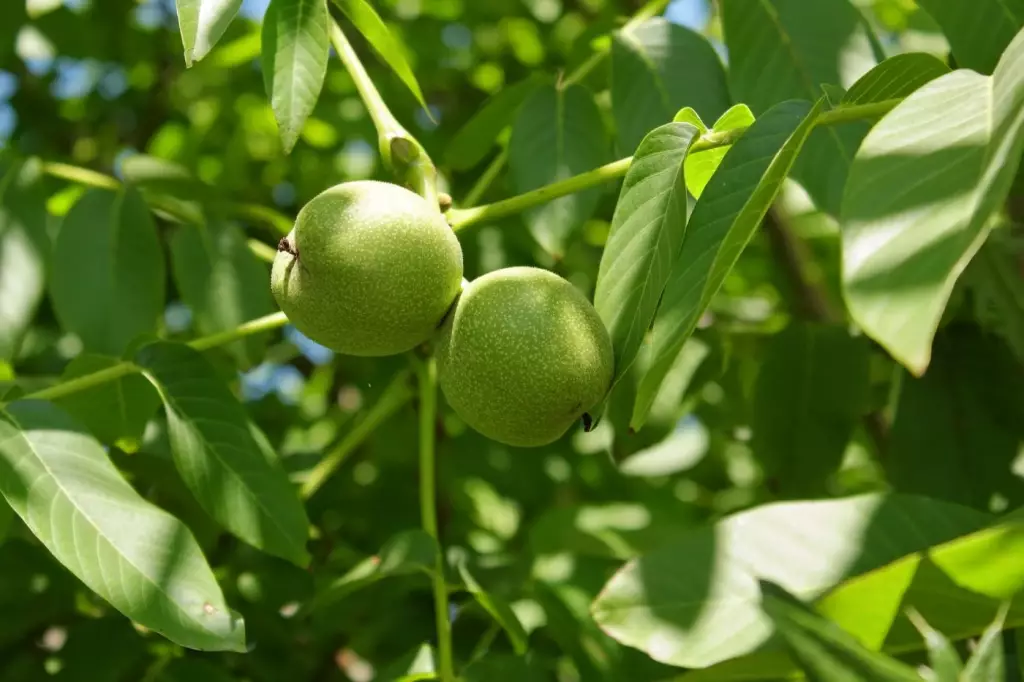
The trees grow best in deep, fertile soils with a pH range of 6.0 to 7.5. The pH level of the soil affects the availability of nutrients to the tree.
If the soil is too acidic or alkaline, the tree may not be able to absorb enough nutrients, which can lead to poor nut production.
As for water, the trees require regular watering during the growing season, especially during hot and dry weather. However, overwatering can lead to root rot and other diseases that can affect nut production.
The role of pollination in walnut nut production
Walnut trees are not self-pollinating, which means they require cross-pollination between male and female trees to produce nuts.
The trees have both male and female flowers, but they do not mature at the same time. The male flowers mature first, releasing pollen into the air. The female flowers mature later, and they require the pollen from the male flowers to fertilize and produce nuts.
Growers must ensure that there are enough male trees in the orchard to provide adequate pollen for the female trees. The recommended ratio of male to female trees is 1:10. However, it may vary depending on the cultivar and the orchard's location.
You can learn more factors that impact the frequency of walnut tree nut production when you read this article.
The role of alternate bearing in nut production
Nut production can also be affected by alternate bearing, which is a natural phenomenon that affects many fruit and nut trees.
Alternate bearing refers to the tendency of the tree to produce a heavy crop one year and a light crop the next. This is due to the tree's limited resources and the need to recover after a heavy crop year.
When a tree produces a heavy crop, it uses up a lot of its energy reserves, including nutrients and carbohydrates. As a result, the tree may not have enough resources to produce a heavy crop the following year.
Instead, it may produce fewer nuts or no nuts at all. This cycle of heavy and light crops can continue for several years, depending on the tree's age, health, and growing conditions.
Alternate bearing can be a significant challenge for growers, as it can make it difficult to predict crop yields and plan for the future. However, there are several strategies that growers can use to manage alternate bearing and maximize nut production:
To learn more tips on how to manage a walnut orchard, you might find useful techniques from this article.
Practice thinning the crop
Thinning involves removing some of the nuts from the tree to reduce the tree's overall crop load. By doing so, the tree is able to conserve its resources, such as water and nutrients, and direct them towards producing a more consistent crop in the following year.
Thinning the crop also helps to reduce the stress on the tree, which can lead to a healthier and more productive tree in the long run. Note that thinning should be done carefully and at the right time to avoid damaging the tree or reducing the overall yield too much.
Use cultural practices
Another strategy is to use cultural practices, such as pruning and fertilization, to promote tree health and vigor. Healthy trees are better able to withstand the stress of heavy crop years and recover more quickly.
Pruning involves removing dead, diseased, or damaged branches from the tree, as well as any branches that are growing in the wrong direction or that are crowding other branches.
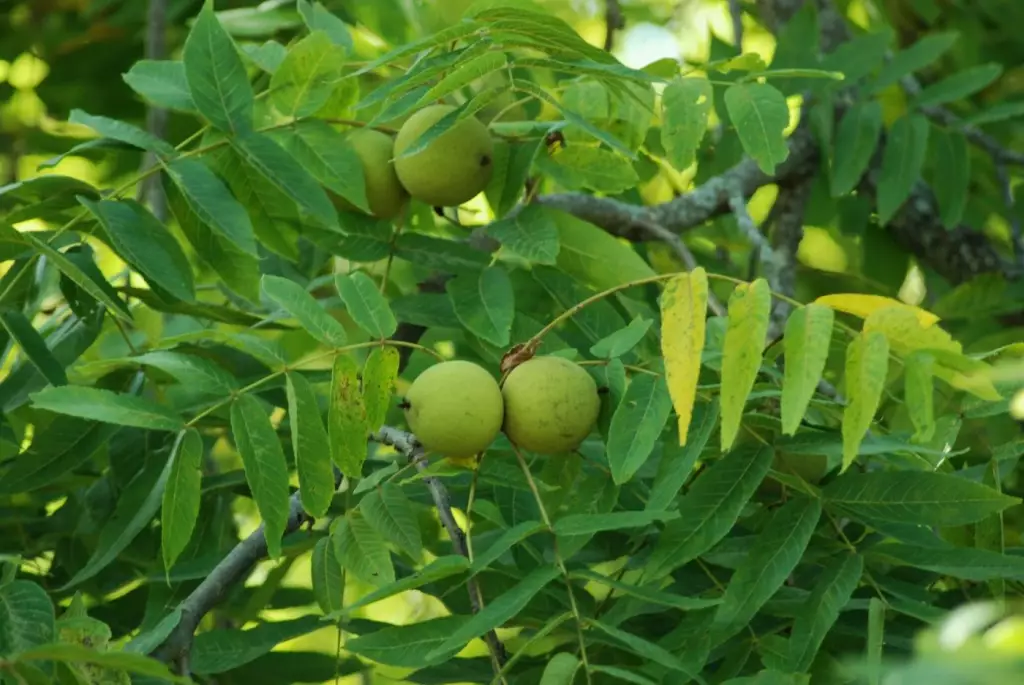
This helps to improve air circulation and sunlight penetration, which can reduce the risk of disease and improve overall tree health.
Fertilization involves applying nutrients to the soil around the tree to promote healthy growth and development. This can help the tree produce more and better quality nuts, as well as improve its ability to withstand stress.
Master some grafting techniques
Grafting techniques are another strategy that walnut growers can use to create trees that produce a more consistent crop. This involves grafting a scion from a heavy-cropping tree onto a rootstock that is known for its consistent yields.
Grafting is a technique that involves joining two different parts of a plant together to create a new plant with desirable characteristics.
In the case of walnut trees, grafting can be used to create a tree that produces a more consistent crop from year to year. By grafting a scion from a heavy-cropping tree onto a rootstock that is known for its consistent yields, growers can create a tree that is more likely to produce a consistent crop, even during heavy crop years.
By knowing the average time of nut ripening for different walnut varieties, you can choose cultivars suited to your climate that will reach optimal harvest windows, maximizing pounds picked per tree through timely harvesting before nuts fall and are lost to the ground or pests, directly impacting your annual revenues and profits.
How to Identify When Walnuts Are Ready for Harvest
Below are some tips for identifying when walnuts are ready for harvest:
1. Check the hulls
Walnuts grow inside a green, fleshy hull that surrounds the nut. As the nuts mature, the hulls start to dry out and split open, revealing the nut inside.
Check the hulls regularly to see if they are starting to split. If the hulls are still green and intact, the nuts are not yet ready for harvest.
2. Look at the nuts
Mature walnuts are plump and firm, with a smooth surface and a uniform color. The shells should be hard and not have any cracks or holes. If the nuts are shriveled or have a mottled appearance, they may not be mature yet.
3. Do a shake test
Gently shake the branches of the tree and see if any nuts fall off. If the nuts are mature, they should come off easily. If they are not ready, they will stay attached to the tree.
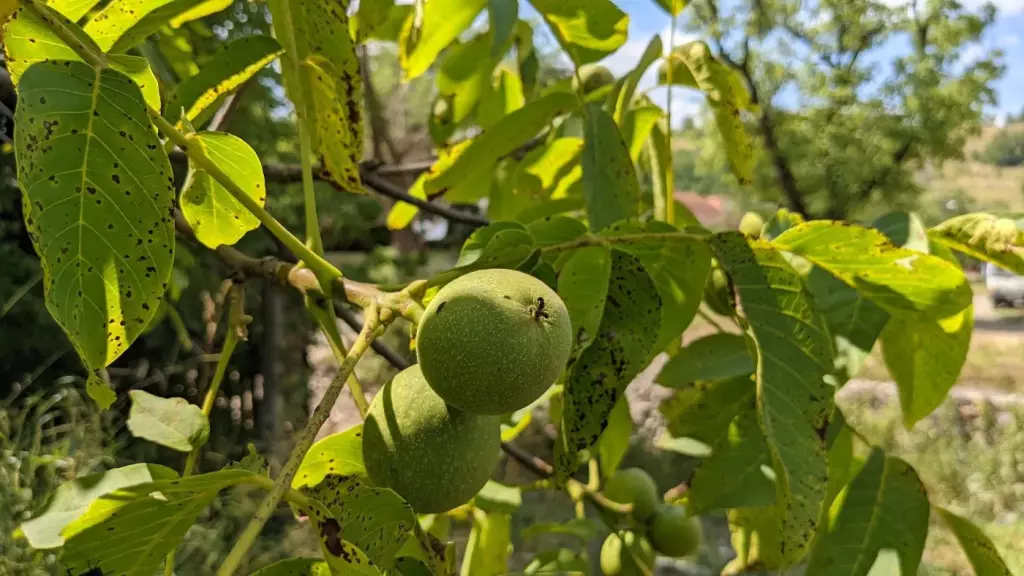
4. Measure the moisture content
The moisture content of the nuts can also help determine if they are ready for harvest. Mature walnuts typically have a moisture content of 8-10%. You can use a moisture meter to measure the moisture content of the nuts.
5. Check the harvest date
The harvest date for walnuts can vary depending on the cultivar and the growing conditions. In general, walnuts are harvested in the late summer or early fall, when the nuts are mature and the hulls have started to split open.

